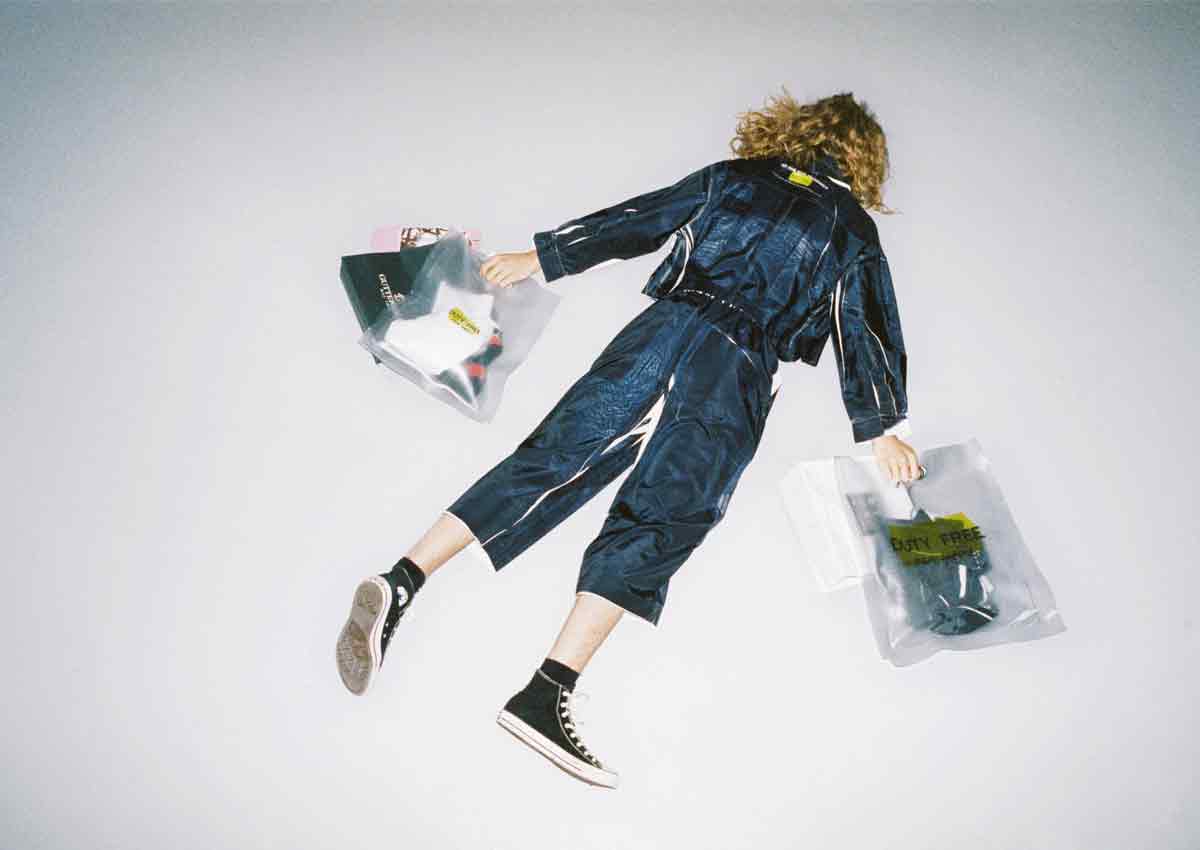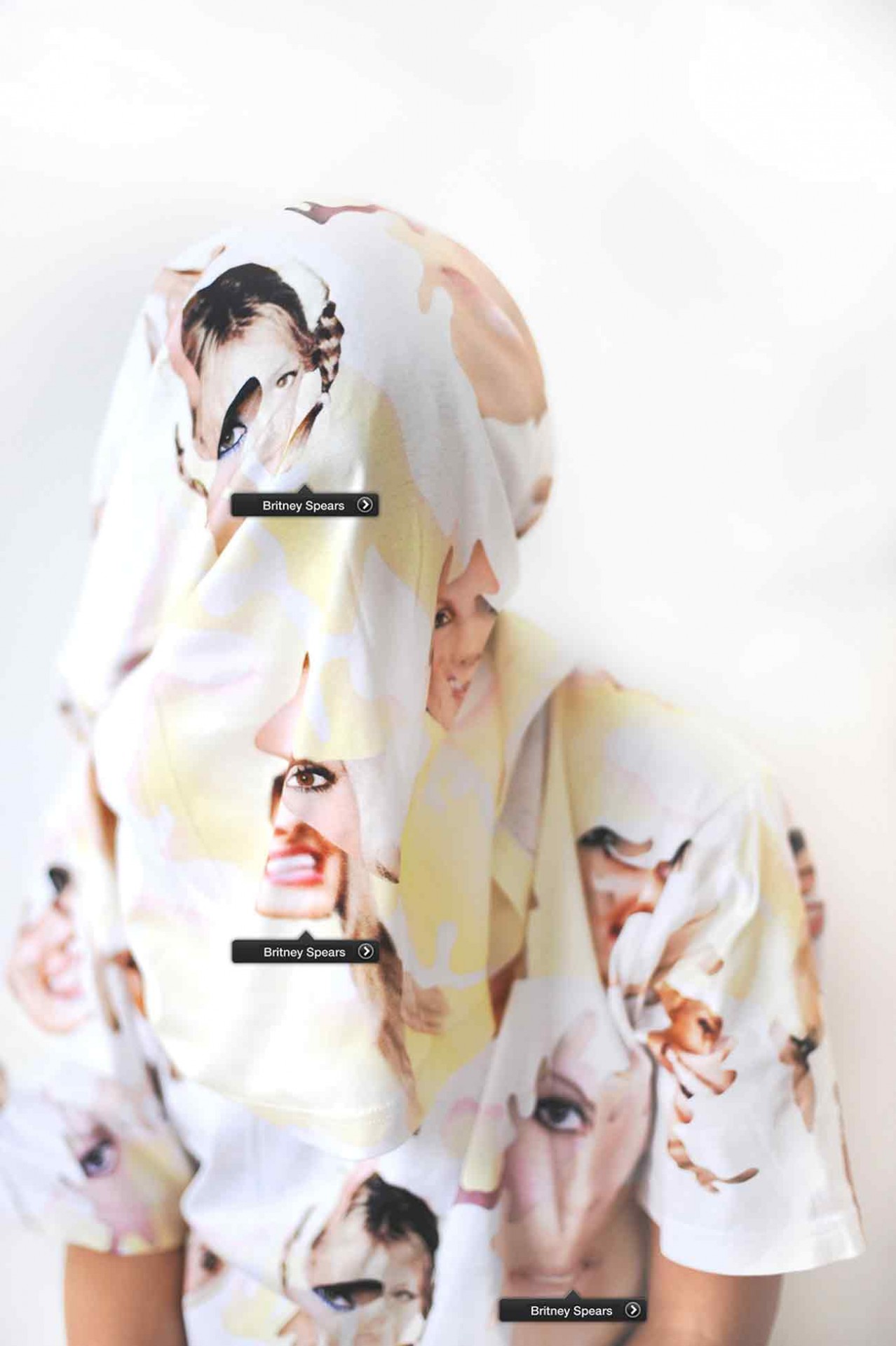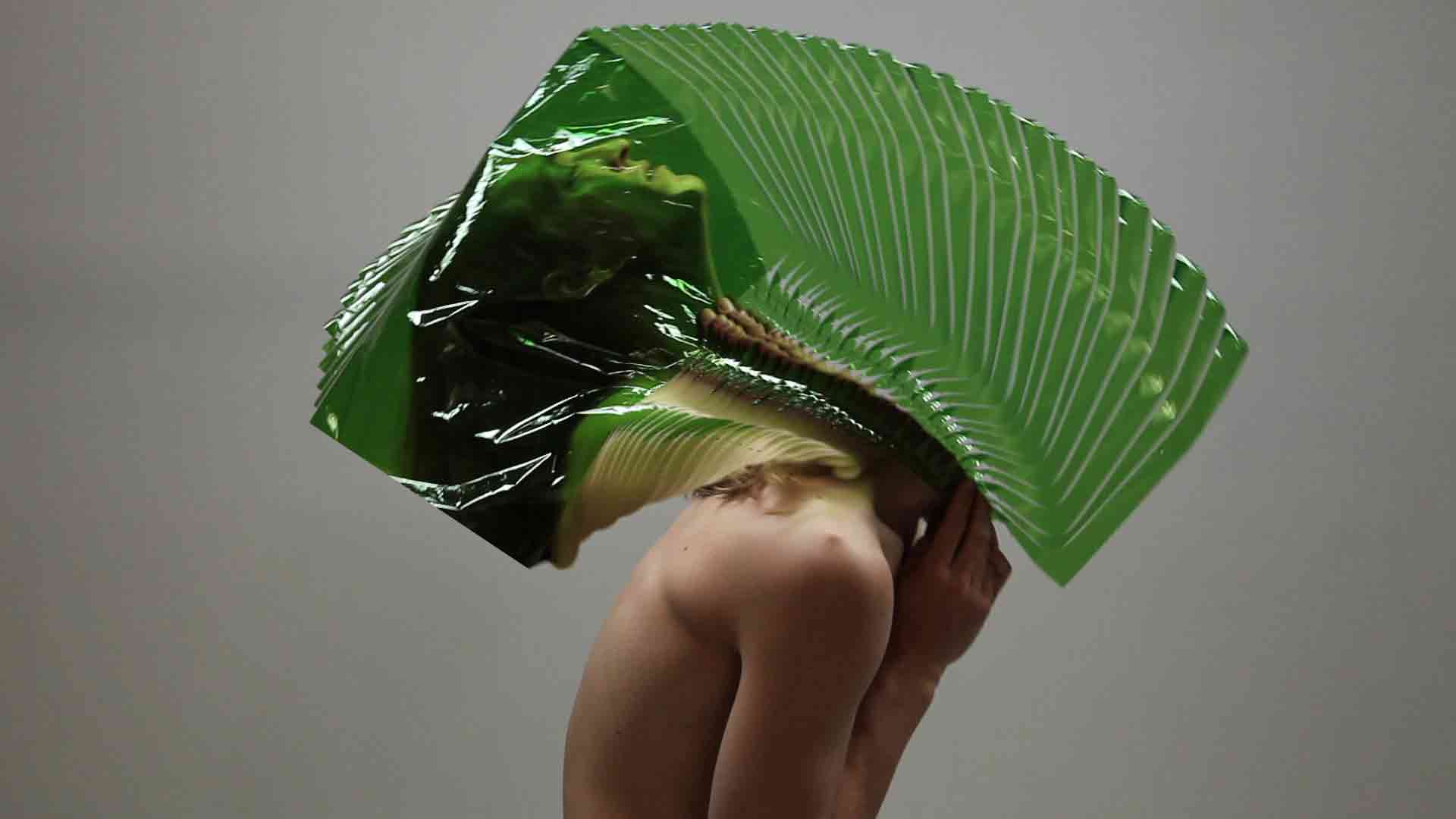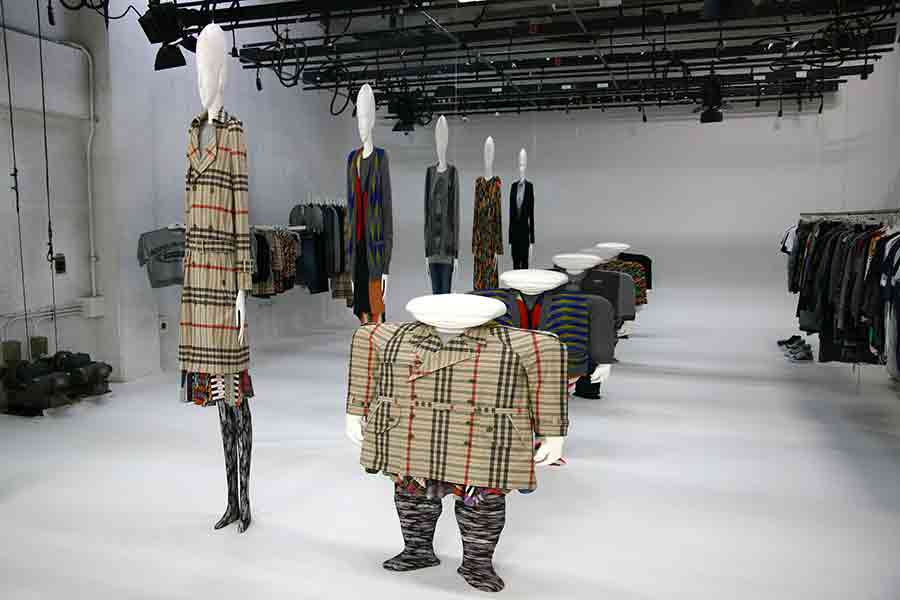Digital Disturbances at The Fashion Space Gallery
 As far as I’m concerned, digital means I can no longer wiggle the aerial when the television screen goes squiffy. But of course, it’s more than that. Over the past 20 years, the technology has advanced so far that ‘digital’ has become a familiar moniker, applied to everything from print and games, to music and art.
As far as I’m concerned, digital means I can no longer wiggle the aerial when the television screen goes squiffy. But of course, it’s more than that. Over the past 20 years, the technology has advanced so far that ‘digital’ has become a familiar moniker, applied to everything from print and games, to music and art.
Now, a new exhibition at the Fashion Space Gallery, at the LCF, explores the way digital technology affects the way fashion works, with all its possibilities but also its limitations. Digital Disturbances features the work of eight multimedia creatives, all consumed with the way information is exchanged between the physical and the virtual worlds and what is lost gained during that exchange.
‘Digital Disturbances developed out of a previous concept about digital print design, which I worked on a few years ago but was postponed,’ says curator Leanne Wierzba. ‘Digital print was a big topic for London fashion, with labels including Mary Katrantzou and Peter Pilotto leading innovation and creativity in this area of design. There was a lot to celebrate.

‘Now, however, it feels as though the subject has moved on significantly. Digital design is, on the one hand, much more integrated and, at the same time, still very much in need of critical assessment and definition.’
The exhibition is underpinned by the idea of The New Aesthetic, a term coined by writer and technologist James Bridle in 2011 to describe the increasing influence of the visual language of digital technology and the Internet.
‘The term provides a framework for analysing work that engages with digital technology explicitly, as a style but also as a system,’ says Wierzba. ‘Following from this, the exhibition looks at the often strange effects of integrating the logic and aesthetics of the internet into the culture of fashion, as well as some of the political implications of this – particularly in relation to privacy.’
The exhibition includes both fashion and film, all from the past five years - key when you consider how quickly technology moves. ‘The film Echo by Dutch designer Bart Hess and Japanese designer ANREALAGE’s wideshortslimlong both deal with how aesthetic and physical properties can be manipulated using digital software,’ says Wierzba. ‘In Echo, Hess takes basic materials, such as acrylic sheets and balloons, and pulls them across the body in a time-lapse animation to replicate the capabilities of a digital software tool. Wideshortslimlong employs computer design software to manipulate objects - presenting the viewer with four dramatically different silhouettes.’
Multimedia art project POSTmatter showcases Ripple (2014), an interactive film installation which uses a tactile fabric interface to simulate the experience of touching the images and clothing that appear on screen, causing digital ripples to reveal layers of materials and images. Shirts from Swiss graphic designer Simone C. Niquille’s REALFACE Glamouflage (2013) collection raise questions about the impact of facial recognition technology and surveillance on personal privacy by employing dazzle camouflage. Patterns on the shirts incorporate pirated faces and celebrity impersonators, providing an additional layer of ‘identity’. Tigran Avetisyan’s Spring/Summer 2015 collection engages in a form of DIY agitprop against the commodifying effects of the Internet and advertising.
What does Wierzba hope visitors will take away from this exhibit? ‘I hope this exhibition will provide visitors with an opportunity to think less literally about the impact of digital tools and concepts on fashion,’ she says. ‘So often, the conversation seems to be limited to digital print design, wearable technology, 3D printing, social media and e-commerce.
‘At the same time, particularly around places like fashion schools, ‘the digital’ is often conflated with some pretty out-there utopian thinking. With Digital Disturbances, I hoped to avoid literal, industry interpretations of digital fashion, while also grounding it in things that are really happening. The exhibition provides an opportunity to investigate how digital technology impacts on the ways in which we engage with ourselves and our surroundings as it becomes increasingly integrated into our daily lives.’
The exhibition will be accompanied by a programme of talks, workshops and masterclasses. Coinciding with the exhibition, on 16 October, there will be a forum exploring the now, near and future of fashion technology asking ‘Where are our digital selves heading?’ called #RE_IMAGINE. This will launch The Digital Anthropology Lab at London College of Fashion, University of the Arts, a research studio bringing industry and academia together to develop a new way of making smarter technology.
Till December 12. Fashion Space Gallery, London College of Fashion, 20 John Prince’s Street, London, W1G 0BJ. www.fashionspacegallery.com



